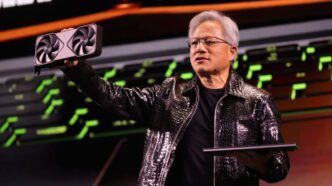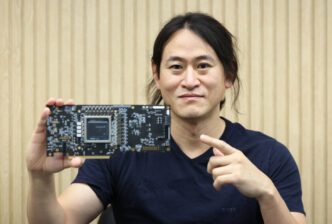Nvidia’s GTC 2025 conference delivered plenty of major announcements, but CEO Jensen Huang also took the audience back in time — revealing the surprising spark behind the company’s aggressive push into autonomous vehicles.
During his keynote, Huang highlighted the pivotal role of AlexNet, a neural network architecture that revolutionized computer vision back in 2012. Created by AI experts Alex Krizhevsky, Ilya Sutskever (who later co-founded OpenAI), and Geoffrey Hinton, AlexNet stunned the tech world by winning the prestigious ImageNet competition with an 84.7% accuracy rate.
This landmark achievement didn’t just ignite a wave of renewed interest in deep learning — it reshaped Nvidia’s entire strategy. Deep learning, a subset of machine learning that mimics the human brain’s neural networks, became the foundation of AI breakthroughs that followed.
For Huang, AlexNet was the turning point.
“We’d been working on computer vision for a long time. But the moment I saw AlexNet, it was just so inspiring — so exciting. It made us decide to go all-in on building self-driving cars,” Huang recalled on stage.
That decision, made over a decade ago, would help position Nvidia as a key player in the race toward autonomous driving.
Nvidia’s Deep Roots in the Self-Driving Car Ecosystem
Since that fateful moment, Nvidia has steadily embedded its technology into the autonomous vehicle industry. Today, its GPUs and software platforms power some of the most ambitious self-driving projects in the world.
The company has forged strong partnerships with automakers, tech firms, and suppliers, ensuring its systems are at the heart of countless self-driving prototypes and commercial projects.
In fact, Nvidia announced a deeper collaboration with General Motors (GM) during the GTC 2025 conference, further cementing its role in the automotive sector.
Powering Industry Giants — From Tesla to Toyota
From the data centers training autonomous driving models to the chips inside the vehicles themselves, Nvidia’s influence is everywhere:
- Tesla, Waymo, and UK-based Wayve rely on Nvidia’s powerful GPUs to process massive amounts of driving data in their AI training pipelines.
- Auto manufacturers are turning to Nvidia’s Omniverse platform to create digital twins of factories, enabling virtual testing of manufacturing workflows and vehicle designs.
- Major players like Mercedes-Benz, Volvo, Toyota, and Zoox use Nvidia’s Drive Orin system-on-chip, which is built on the company’s Ampere supercomputing architecture.
- For enhanced safety, Toyota and others also integrate Nvidia’s DriveOS, a purpose-built operating system designed for autonomous driving applications.
The Impact: Nvidia’s DNA Runs Deep in the Autonomous Driving Revolution
What began as a spark of inspiration from an AI research paper has evolved into a dominant presence in the self-driving car industry. Nvidia’s chips, software, and simulation platforms are now the backbone of many autonomous vehicle projects worldwide.
From powering real-world self-driving fleets to simulating factory floors, Nvidia’s contributions are shaping the future of transportation — a future that’s increasingly automated and AI-driven.












